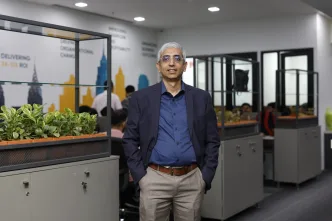Internal communication has always been a cornerstone of organizational success, as people are the backbone and one of the most critical pillars of any business. Ensuring clear, effective, and engaging communication within teams is vital to maintaining productivity, morale, and alignment with company goals and values. AI is revolutionizing internal communication, enabling smarter, faster, and more personalized interactions like never before.
AI Adaption
Businesses are adapting various methods of maintaining and channelling communication at different levels. To support this process, organizations have been actively implementing various technological solutions into their operations. Notably, 46% of business owners utilize AI to craft internal communications, highlighting the growing integration of this tech in enhancing workplace interactions.
Here are some of the ways through which AI is anchoring internal communication
- Personalisation and Targeted Messaging
Personalisation in communication plays a crucial role. When an employee receives personalised content, it can significantly enhance their experience. AI makes this possible by delivering information that matches their preferences, roles, or interaction history. It can also analyse employee behaviour to suggest, for example, training programs that resonate with their specific business needs or professional growth plans. Such an approach can help organizations secure greater engagement and loyalty within the workforce.
- Diverse Content Formats
AI gives communication professionals the access and liberty to choose and work on various content formats such as infographics, narratives, interactive elements, videos, or podcasts adding depth and variety. All these multiple formats fulfil the meaningful purposes of keeping employees informed and delivering engaging communication. The effect of team engagement on business results is significant. Brands with engaged employees see a 21% boost in profits, a 17% jump in productivity, and 10% better customer loyalty. On the other side, low engagement often causes problems like higher employee turnover, low motivation, or slow speed of work.
- Brand Consistency
Beyond visual communication, AI tools can help maintain a consistent brand voice by learning patterns and creating content that aligns with brand guidelines. For example, AI assistants can analyse existing brand content to identify key elements of the brand’s identity, including tone of voice, positioning, or even word preference.
- Communication Flow
With the use of machine learning, natural language processing, and advanced algorithms, communication flow with an organization can be automated, personalized, and enhanced. The use of AI-driven chatbots can result in faster response times and increased productivity for employees. These chatbots are beneficial in helping with instant answers and reducing manual supervision.
- Understanding Cultural Nuances
Brands that have offices across the globe are finding AI language translation tools extremely useful for their multilingual teams. They start using AI-powered tools to bridge language and cultural gaps, enabling seamless communication among multilingual teams. With the onset of remote and hybrid work culture, such innovations allow seamless collaboration resulting in productivity and team building.
- Real-time Data Analytics
The processing of complex data at a fast rate is possible with AI and machine learning resulting in real-time data analytics. This certainly helps internal communication teams with data-driven insights immediately and supports them in planning and shaping their communication strategy. The impact of communication efforts becomes measurable, analysing employee feedback gets easier, and revision of communication strategy is also possible with AI tools.
With the rapid growth of technology, the field of communication is set to uncover more ways how AI can empower certain processes. AI tools will provide greater accuracy, enhanced engagement, and more customised message delivery. At the same time, the role of humans will be more important than ever, guiding technology in the right direction, cross-checking insights, and serving as a filter for ethical considerations and other critical aspects.



















